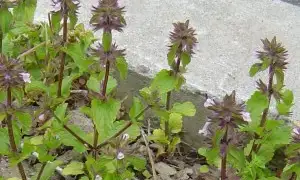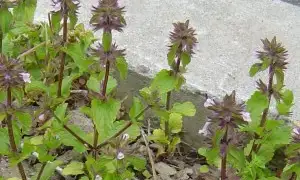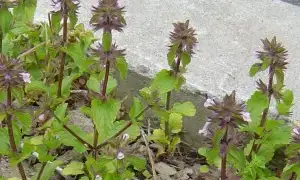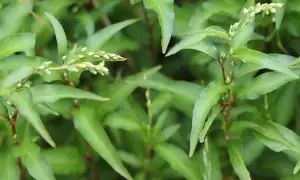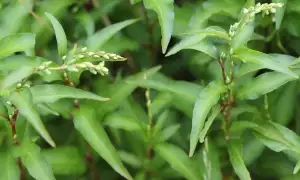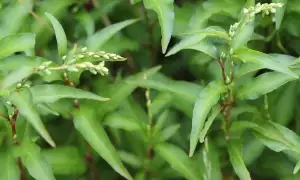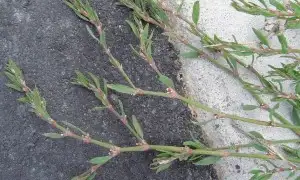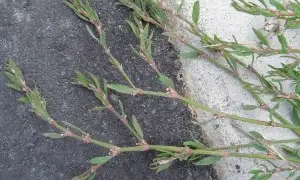Botanical name: Persicaria maculosa
Family name: Polygonaceae
Overview
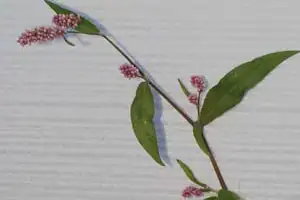
Willow weed: A New Zealand weed that grows well in moist conditions.
Although when growing in bare areas with few other plants around willow weed will scramble along the ground, it can also grow upright under some conditions such as within crops, becoming competitive with upright weeds such as fathen and black nightshade.
Willow weed, formerly called Polygonum persicaria, grows well under moist conditions, thriving under the wet conditions often experienced in newly planted crops in spring. Its preference for moist conditions means it grows most aggressively in those parts of the country where summers are not too dry, though it is troublesome throughout New Zealand.
Although it likes moist soils, willow weed also needs soil to be well-aerated for optimal growth. It is a summer annual, dying off in late autumn.
Distinguishing features
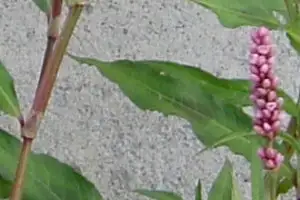
Willow weed flower cluster and stem.
As suggested by its name, the leaves of willow weed are similar in shape to those of willow trees. These leaves usually have a distinctive brown marking in their centre. At the base of each leaf, there is a papery sheath, a common characteristic of weeds in the Polygonaceae family. This is known as the ochrea, and in willow weed, it has a little fringe of hairs on it, unlike the water pepper mentioned below.
The stems are quite fleshy and can either be quite prostrate along the ground or grow fairly upright. Stems often have a reddish tinge, which is why some farmers incorrectly call this weed "redshank."
Flowers are pinkish in colour and quite small, but are clustered tightly together in compact cylindrical bunches on the ends of stems.
Willow weed is often confused with the closely related water pepper (Persicaria hydropiper), a similar-looking weed that is often found in damp pastures, but which has flowers that are much greener than those in willow weed, and are not clustered as tightly into cylindrical bunches as in willow weed.
A very closely related weed is pale willow weed (Persicaria lapathifolia), which looks very similar to willow weed but the seed head is a paler pink, hence its name, often there is no blotch on the leaf and the ochrea doesn’t have the fringe.
Another closely related weed that looks similar to willow weed is a native species known as swamp willow weed (Persicaria decipiens) which also has a Māori name of tūtunāwai. Unlike the other species discussed above, swamp willow weed is a perennial species with a stolon system (creeping stems with some roots) and is often found growing next to streams or in shallow water. The pinkish flower spikes tend to be a bit more slender than with willow weed and sometimes branch.
A weed that doesn’t look that similar but does get confused with willow weed because of its name is tall willow herb (Epilobium ciliatum), which many people mistakenly call willow weed. The leaf shape is vaguely similar but it grows much more upright and has completely different flowers and fruits with small flowers on the ends of long pods that split open to release wind-blown seeds.
Control
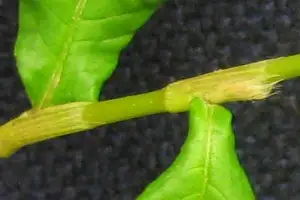
Willow weed stem with hairs at the base of each leaf.
Unlike the tall willow herb which tolerates a number of herbicides such as glyphosate, willow weed is much more straightforward when it comes to control, being susceptible to cultivation and most herbicides. However, some herbicides such as 2,4-D amine, clopyralid and acetochlor only really suppress willow weed.
In some areas where atrazine has been applied for many years in succession for maize crops, a biotype of willow weed resistant to atrazine and other triazines has developed. Where this is causing problems, alternative herbicides to control it within maize include mesotrione (Callisto), dicamba (Banvel) and nicosulfuron (Latro WG).
